Rail Replacement - Rear Section Corvette
Special Tools
J 42058 Frame Adapter Clamp
Removal Procedure
- Disable the SIR system. Refer to SIR Disabling and Enabling.
- Disconnect the negative battery cable. Refer to Battery Negative Cable Disconnection and Connection.
- Remove all related panels and components.
- Remove the rear impact bar. Refer to Rear Bumper Impact Bar Replacement.
- Remove the rear compartment panel. Refer to Rear Compartment Panel Replacement.
- Remove the fuel tank from the damaged side of the vehicle. Refer to Fuel Tank Replacement - Left Side or to Fuel Tank Replacement - Right Side.
- Note the location and remove the sealers and anti-corrosion materials from the repair area, as necessary. Refer to Anti-Corrosion Treatment and Repair.
- Repair as much of the damage as possible to the factory specifications.
- Use J 42058 to secure the vehicle if pulling and straightening is required.
- Inspect the front of dash panel, the floor panels, and all other sheet molded compounds for cracks or for areas that may need to be repaired or resealed.
- Remove any welds as necessary and pry up the extension panel to expose the frame rail.
- Apply 25 mm (1 in) tape to the extension panel of the outer lock pillar.
- Using a die grinder, cut along the edge of the tape line to create a weld flange, which will be used for installing the new extension panel for the outer lock pillar.
- Locate and drill out all factory welds. Note the number and the location of the welds for installation of the new lower extension panel for the outer lock pillar.
- Remove the outer lock extension panel.
- Using a die grinder cut through the stitch welds that attach the tunnel brace to the frame rail. Make the cuts favoring the frame rail side of the welds.
- Remove the damaged section of the frame rail within the shaded area.
Warning: Refer to Approved Equipment for Collision Repair Warning in the Preface section.
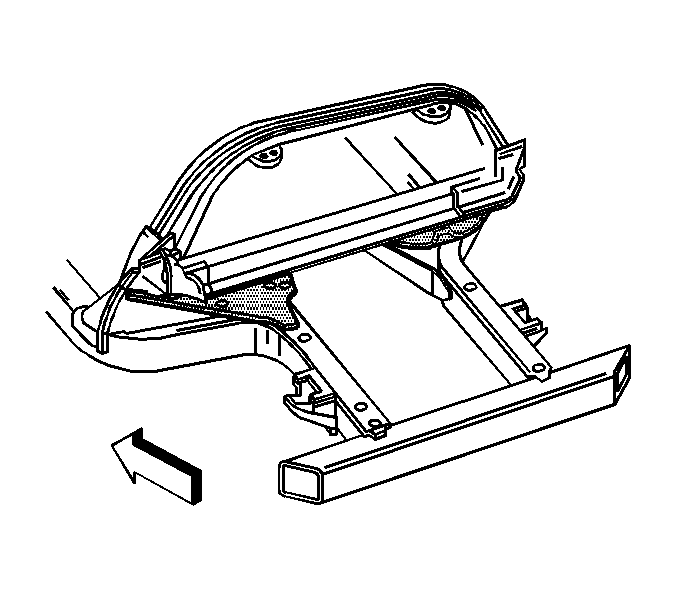
Warning: Refer to Sound Deadener Foam in the Lock Striker Pillars Warning in the Preface section.
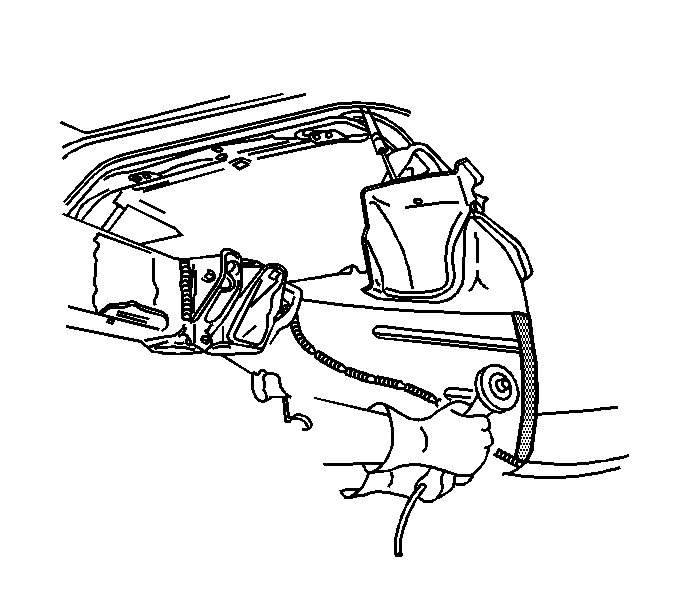
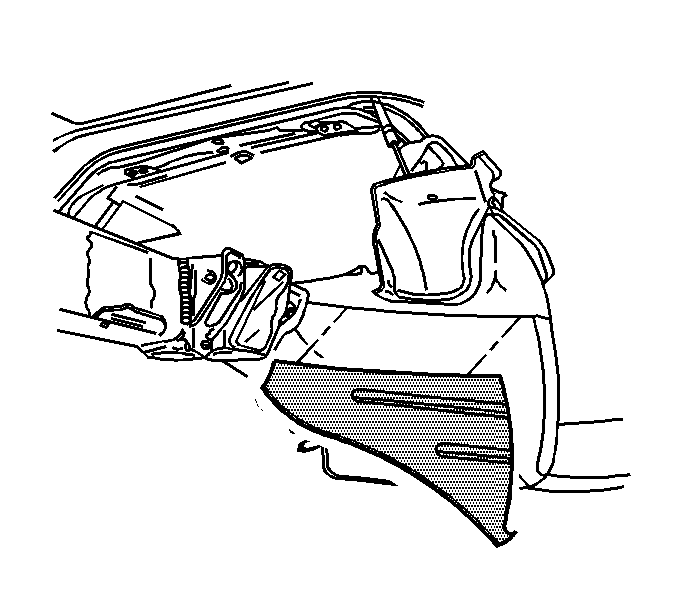

Installation Procedure
- Determine the sectioning joint location within the recommended area.
- Cut the new frame section from the new frame rail assembly.
- Perform the offset lap joint sectioning. Refer to Offset Lap Joint Repair.
- Clean and prepare all of the welded surfaces.
- Apply GM-approved Weld-Thru Coating or equivalent to all mating surfaces. Refr to Anti-Corrosion Treatment and Repair.
- Using a metal insert gas (MIG) welder, stitch weld the tunnel brace to the frame rail duplicating the factory welds.
- Position the extension panel.
- Using a MIG welder, weld the extension panel duplicating the factory welds.
- Replace the outer lock pillar extension panel. Trim to fit the outer lock extension panel overlapping the 25 mm (1 in) flange created from the original extension.
- Drill 8 mm (5/16 in) holes in the new outer lock pillar extension for plug welding.
- Using a MIG welder, tack weld the outer lock pillar extension panel into place.
- Using a MIG welder, plug weld the outer lock pillar extension panel to the flange created form the original extension.
- Using a MIG welder, plug weld the outer lock pillar extension panel to the extension panel.
- Using a MIG welder, stitch weld the outer lock pillar extension to the frame rail duplicating the factory welds.
- Install the rear impact bar. Refer to Rear Bumper Impact Bar Replacement.
- Apply the sealers and anti-corrosion materials to the repair area, as necessary. Refer to Anti-Corrosion Treatment and Repair.
- Install the rear compartment panel. Refer to Rear Compartment Panel Replacement.
- Paint the repair area. Refer to Basecoat/Clearcoat Paint Systems.
- Install the fuel tank. Refer to Fuel Tank Replacement - Left Side or to Fuel Tank Replacement - Right Side.
- Install all related panels and components.
- Connect the negative battery cable. Refer to Battery Negative Cable Disconnection and Connection.
- Enable the SIR system. Refer to SIR Disabling and Enabling.
Warning: Refer to Collision Sectioning Warning in the Preface section.
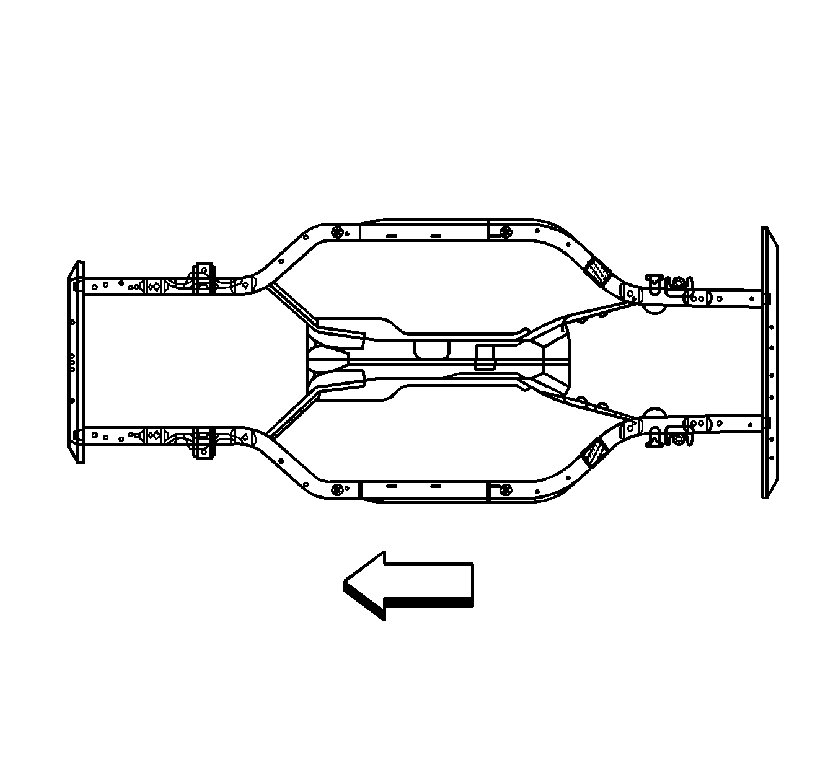
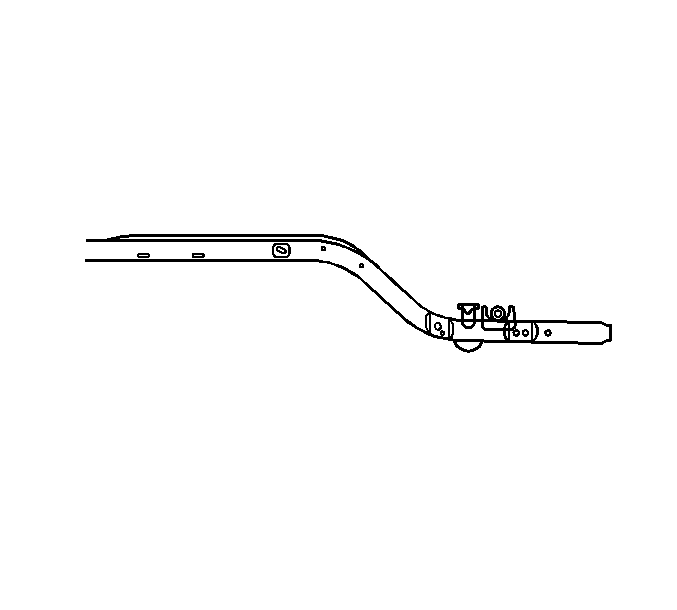
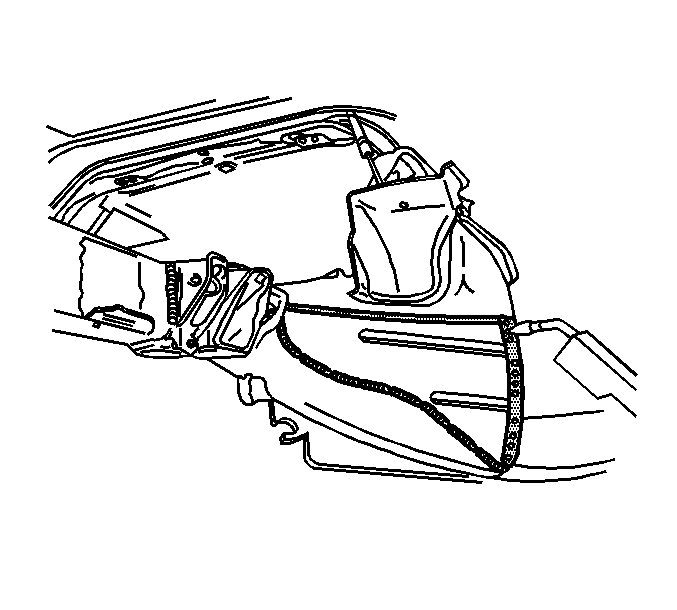
Rail Replacement - Rear Section Z06, ZR1
Special Tools
J 42058 Frame Adapter Clamp
Removal Procedure

The service rails are complete rail assemblies for the left and the right sides, 6063-T7, hydro-formed aluminum parts, which correlate directly with the die mark (1) located on the rear frame rails
- Disable the SIR system. Refer to SIR Disabling and Enabling.
- Disconnect the negative battery cable. Refer to Battery Negative Cable Disconnection and Connection.
- Remove all related panels and components.
- Remove the front impact bar. Refer to Front Bumper Impact Bar Replacement.
- Note the location and remove the sealers and anti-corrosion materials from the repair area, as necessary. Refer to Anti-Corrosion Treatment and Repair.
- Repair as much of the damage as possible to the factory specifications.
- Inspect the front of the dash panel, floor panels, and all other sheet molded compound (SMC) and carbon fiber for cracks or areas that may need to be repaired or resealed.
- Locate and remove all factory welds attaching the upper extension panel (1) to the structure. Note the location of the welds for installation of the upper extension panel.
- Apply 25 mm (1 in) tape (1) to the extension panel of the outer lock pillar.
- Using a die grinder (1), cut along the edge of the tape line to create a weld flange, which will be used for installing the new extension panel for the outer lock pillar.
- Locate and remove all factory welds (1) attaching the extension panel to the structure. Note the location of the welds for installation of the new extension panel.
- Using a drill with a 6 mm (1/4 in) bit, locate and remove all SPRs. Note the number and location of the SPRs for installation of the extension panel.
- Remove the extension panel.
- Locate the die-mark (1) on the damaged frame rail.
- Determine the sectioning joint location (1) within the recommended area.
- At the determined sectioning joint align a sliding square or similar tool square to surface to the vertical walls of the frame rail.
- Scribe a line (1) to both sides of the frame rail.
- Apply masking tape (1) to the scribe line completely around the frame rail.
- Cut the frame rail at the rear edge of the tape line using a reciprocating saw (1) or equivalent tool.
- Remove the damaged frame rail section (1).
Warning: Refer to Approved Equipment for Collision Repair Warning in the Preface section.

Note: Hand tools, saw blades and abrasives used for aluminum repairs should be dedicated for aluminum only to prevent contamination.
Warning: Refer to Sound Deadener Foam in the Lock Striker Pillars Warning in the Preface section.
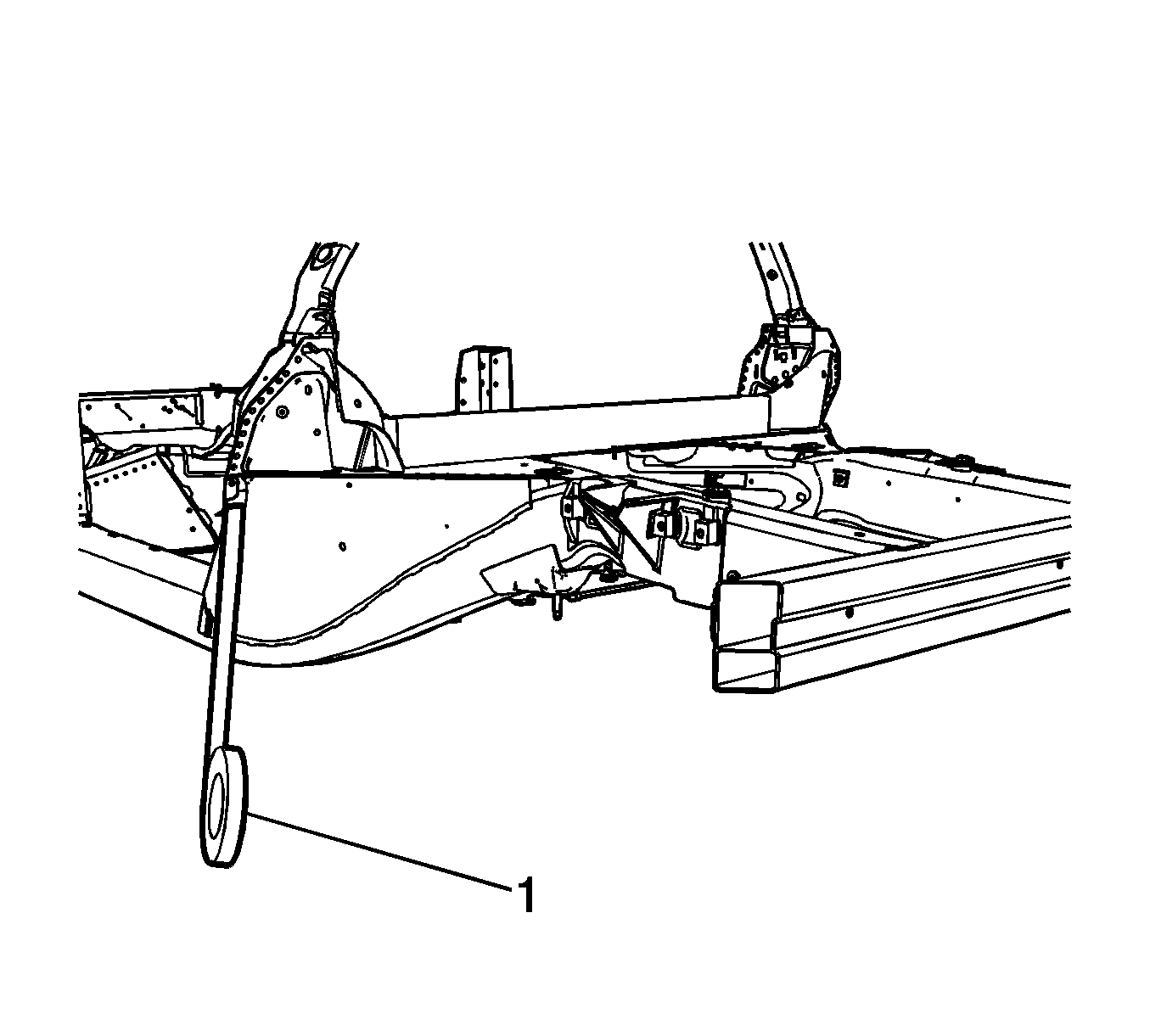
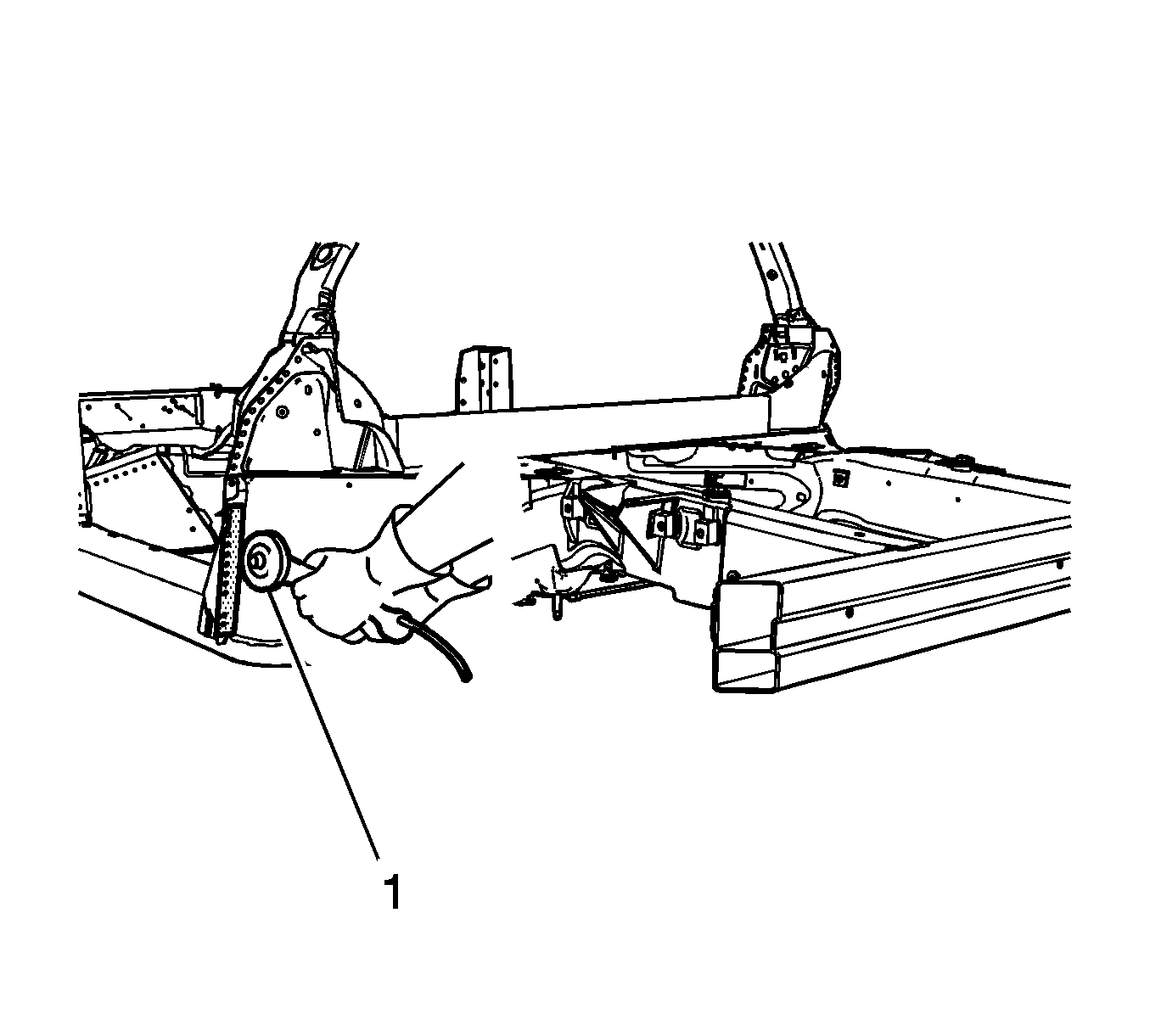

Note: PULSED-MIG (P-MIG) welding is an OPTION for replacing self-piercing rivets (SPR). Drill 10 mm (3/8 in) plug weld holes for each SPR.
Warning: Refer to Collision Sectioning Warning in the Preface section.

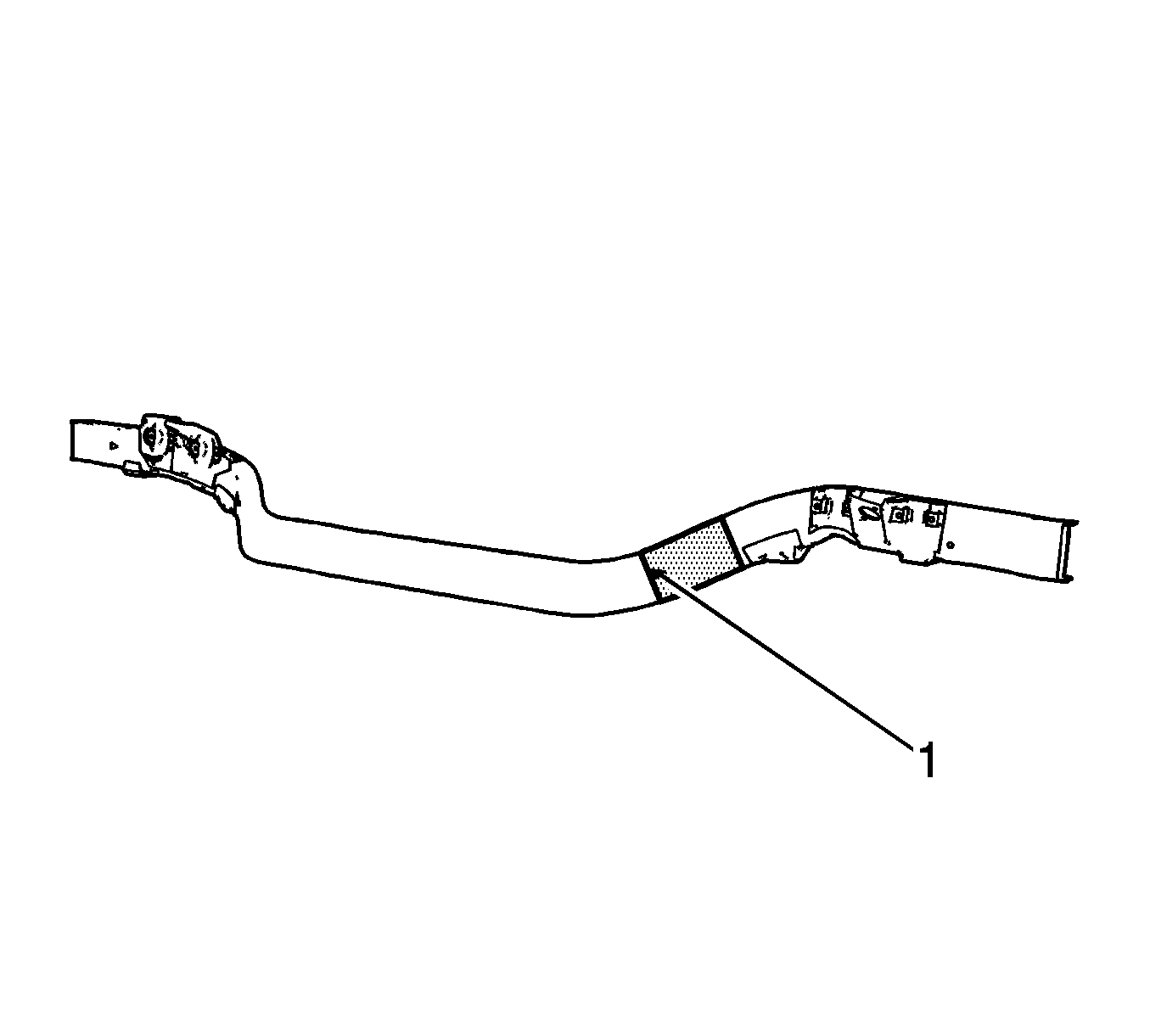
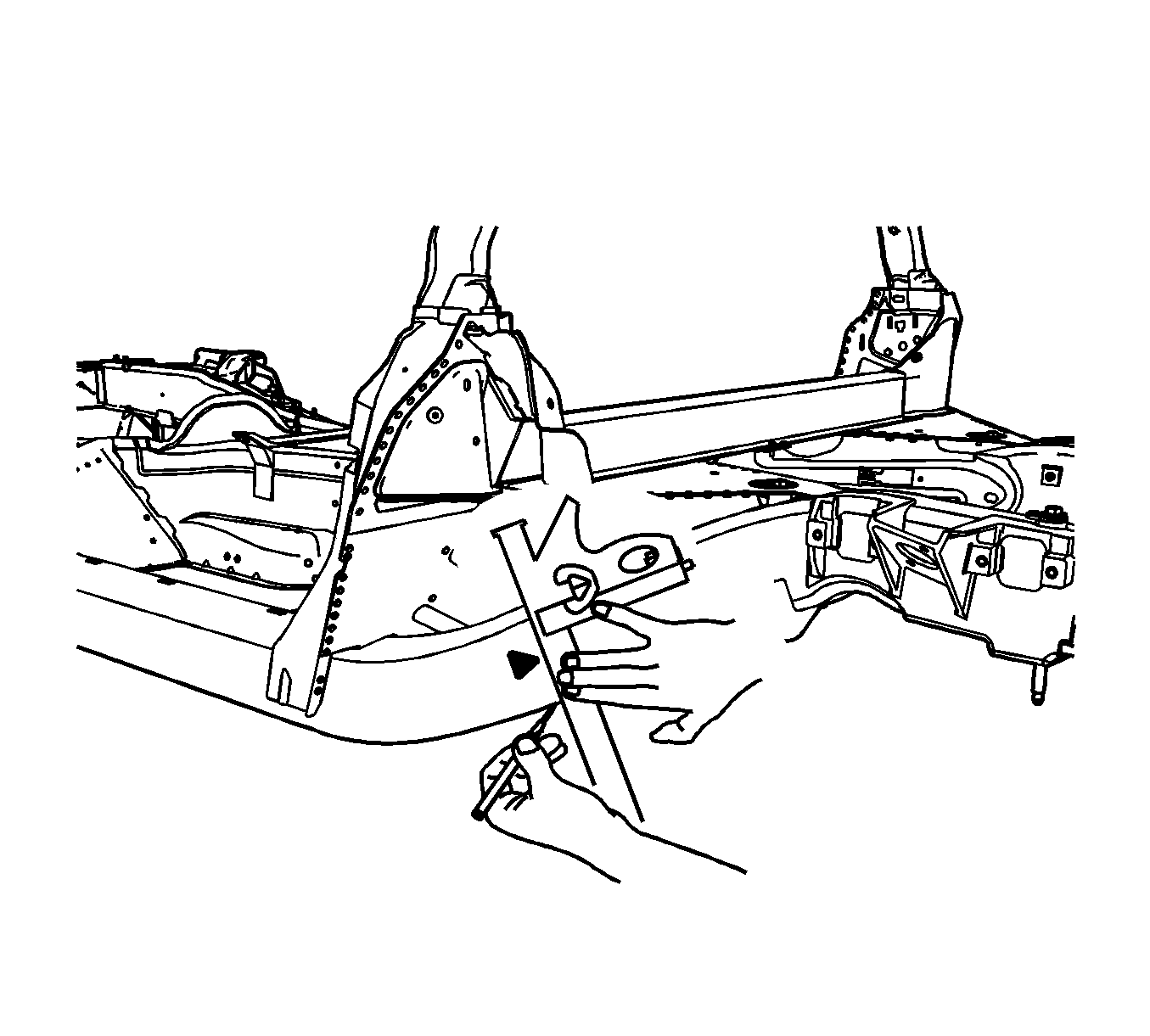
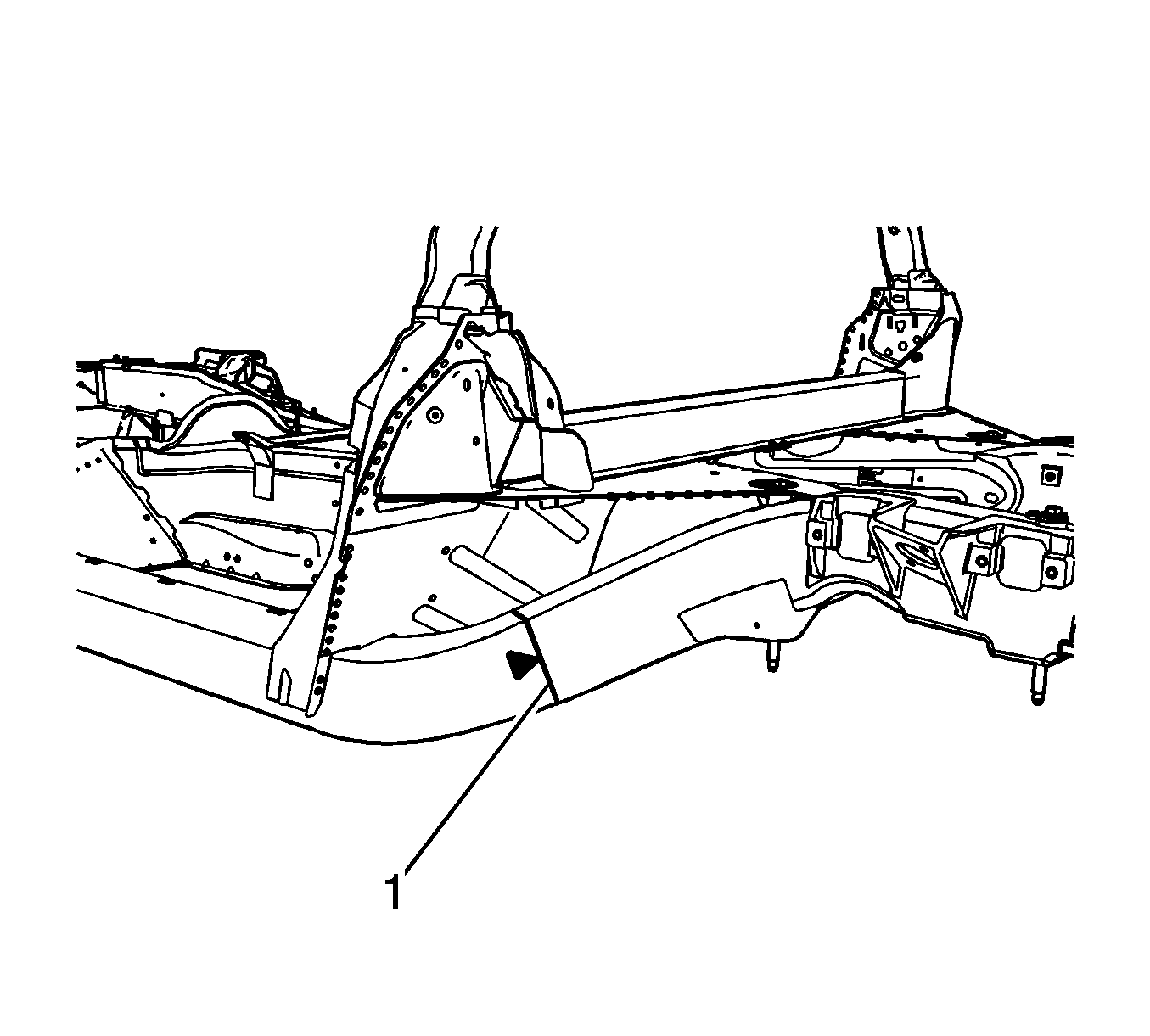
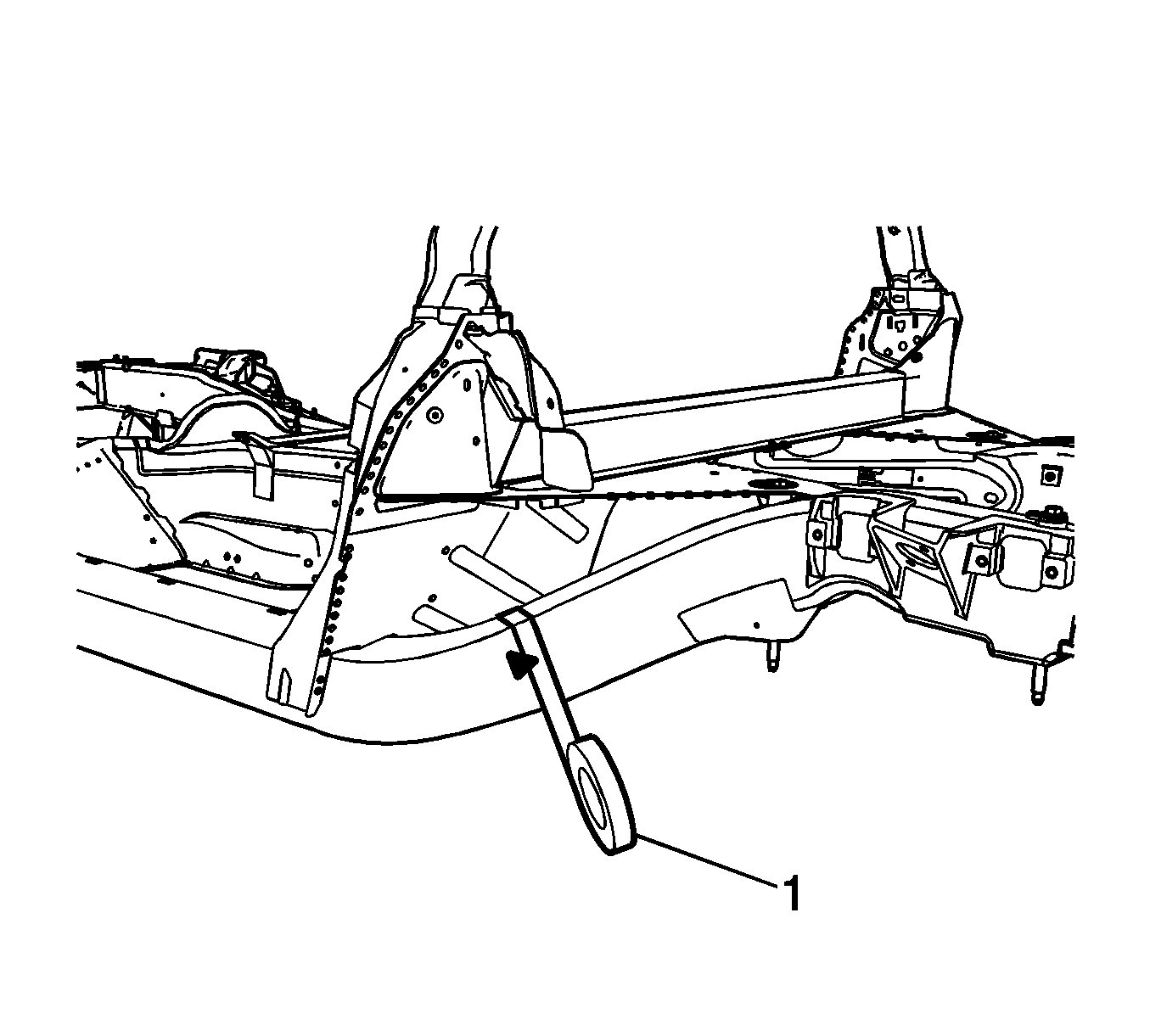
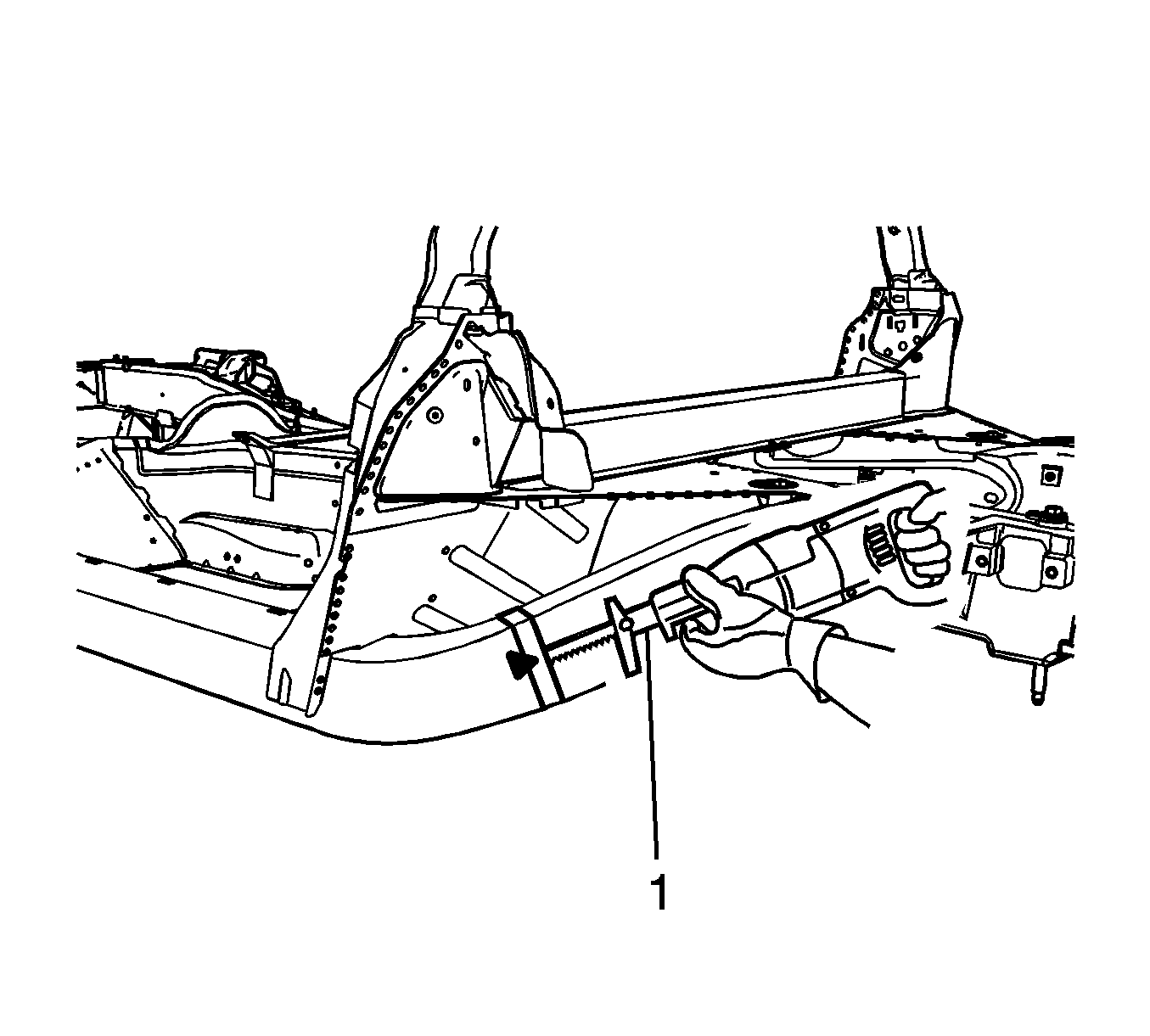
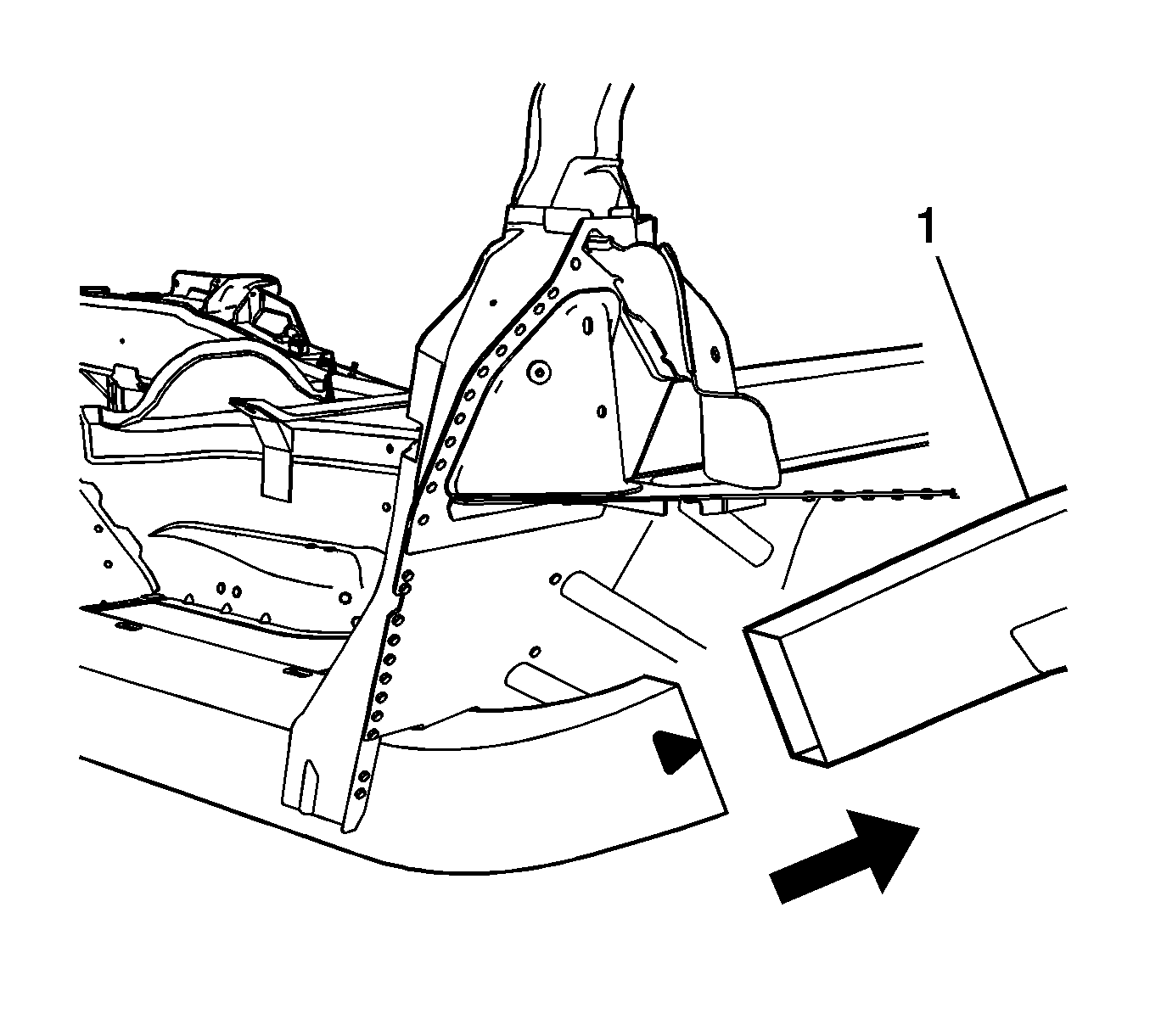
Installation Procedure
- Grind the existing frame rail sectioning location to a 60 degree angle.
- Locate the die-mark (1) on the service frame rail.
- Determine the sectioning joint location within the recommended area.
- Cut the new frame section from the service frame rail assembly.
- Perform the sleeved butt-joint sectioning. Refer to Sleeved Butt Joint Repair
- Clean and prepare all of the welded mating surfaces.
- Position the service frame section (1) to the existing frame.
- Maintain a gap of one frame rail metal thickness at the sectioning joint (1) and clamp in place.
- Inspect the frame measurements three-dimensional to ensure proper position of the service frame section.
- Using a PULSED-MIG (P-MIG) welder, weld 50 mm (2 in) stitch welds to the top and bottom of the sleeve joint.
- Using a P-MIG welder, weld (1) 50 mm (2 in) welds to the inner and outer vertical walls of the sleeve joint.
- Inspect the frame measurements three-dimensional to ensure proper position of the service frame section.
- Using a P-MIG welder, complete the welding of the sleeve joint using the two minute cooling down period for every 2 minutes or 100 mm (4 in) of welding.
- Using a P-MIG welder, stitch weld (1) the upper extension panel (1) to the structure duplicating the factory welds.
- Install the new the extension panel. Trim to fit the extension panel overlapping the 25 mm (1 in) flange created from the original extension.
- Using a P-MIG welder, stitch weld (1) the extension panel to the structure duplicating the factory welds.
- Using a P-MIG welder, stitch weld the extension panel to the flange created form the original extension.
- Drill 6 mm (1/4 in) holes in the service part as necessary in the locations noted on the original panel.
- Countersink the drilled-out hole with using the structural monobolt rivet.
- Using a rivet gun, attach the extension panel with structural monobolt rivets to the structure duplicating the number of factory SPRs.
- Install the front impact bar. Refer to Front Bumper Impact Bar Replacement
- Apply the sealers and anti-corrosion materials to the repair area, as necessary. Refer to Anti-Corrosion Treatment and Repair
- Paint the repair area. Refer to Basecoat/Clearcoat Paint Systems.
- Install all related panels and components.
- Connect the negative battery cable. Refer to Battery Negative Cable Disconnection and Connection.
- Enable the SIR system. Refer to SIR Disabling and Enabling.
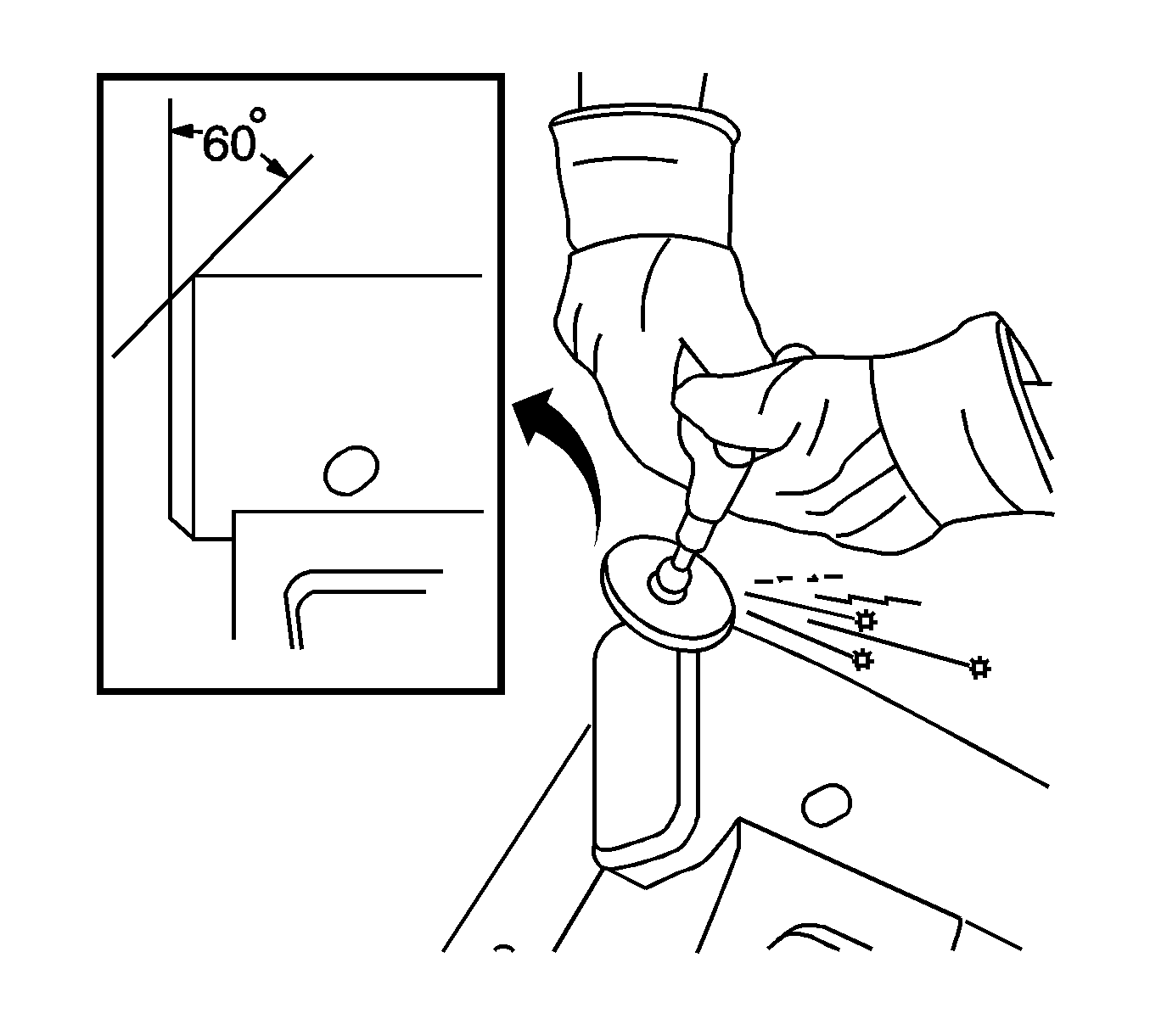
Warning: Refer to Collision Sectioning Warning in the Preface section.

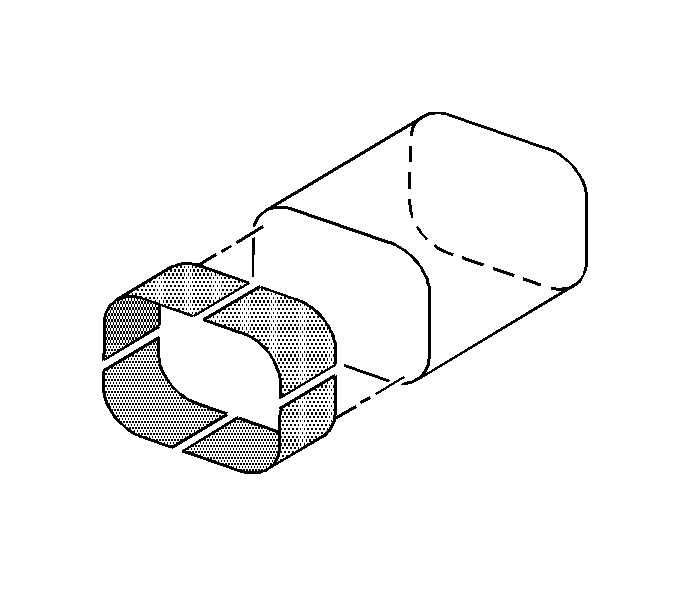
Note: Use a stainless steel brush to remove the oxide layer prior to welding.
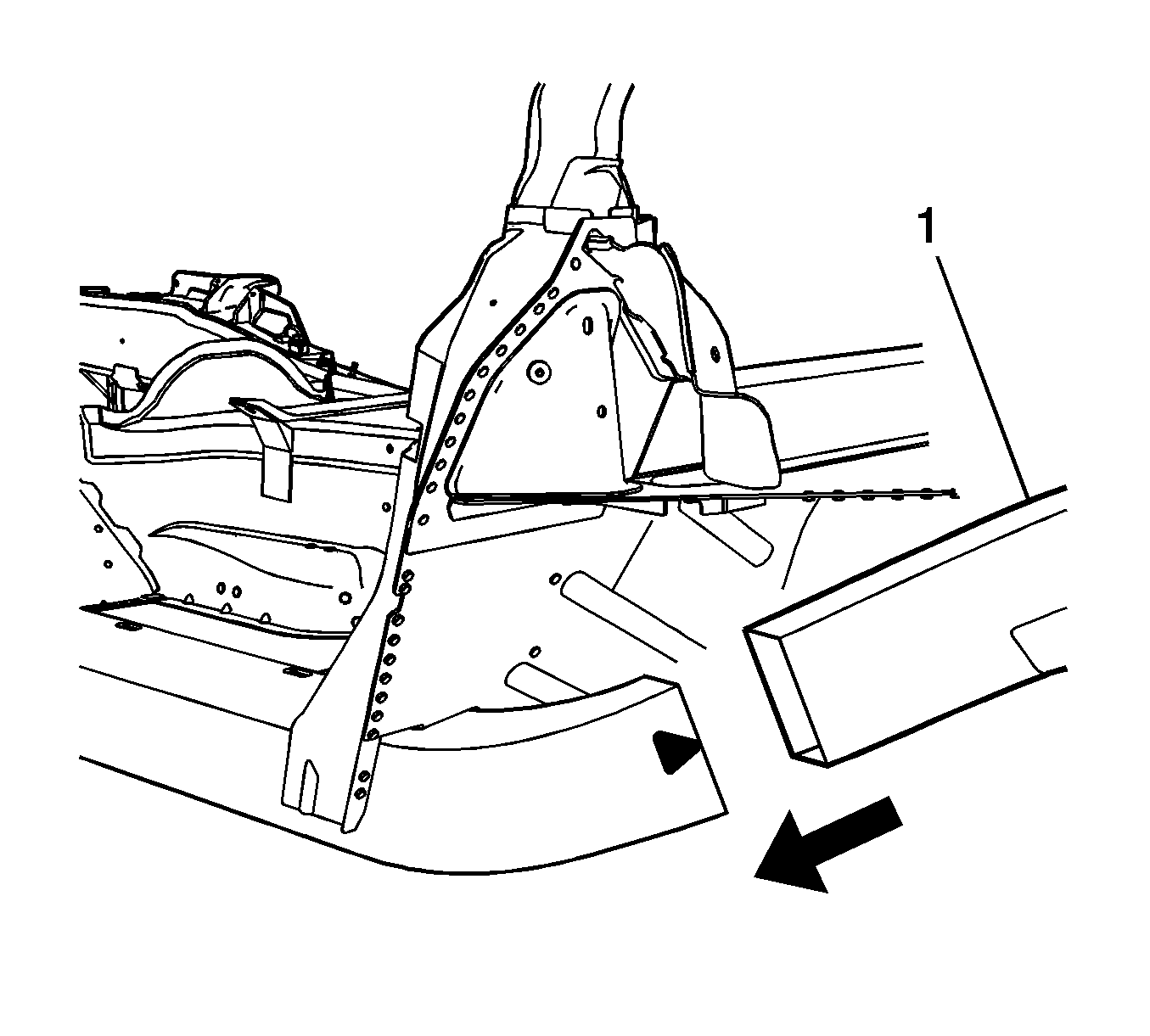

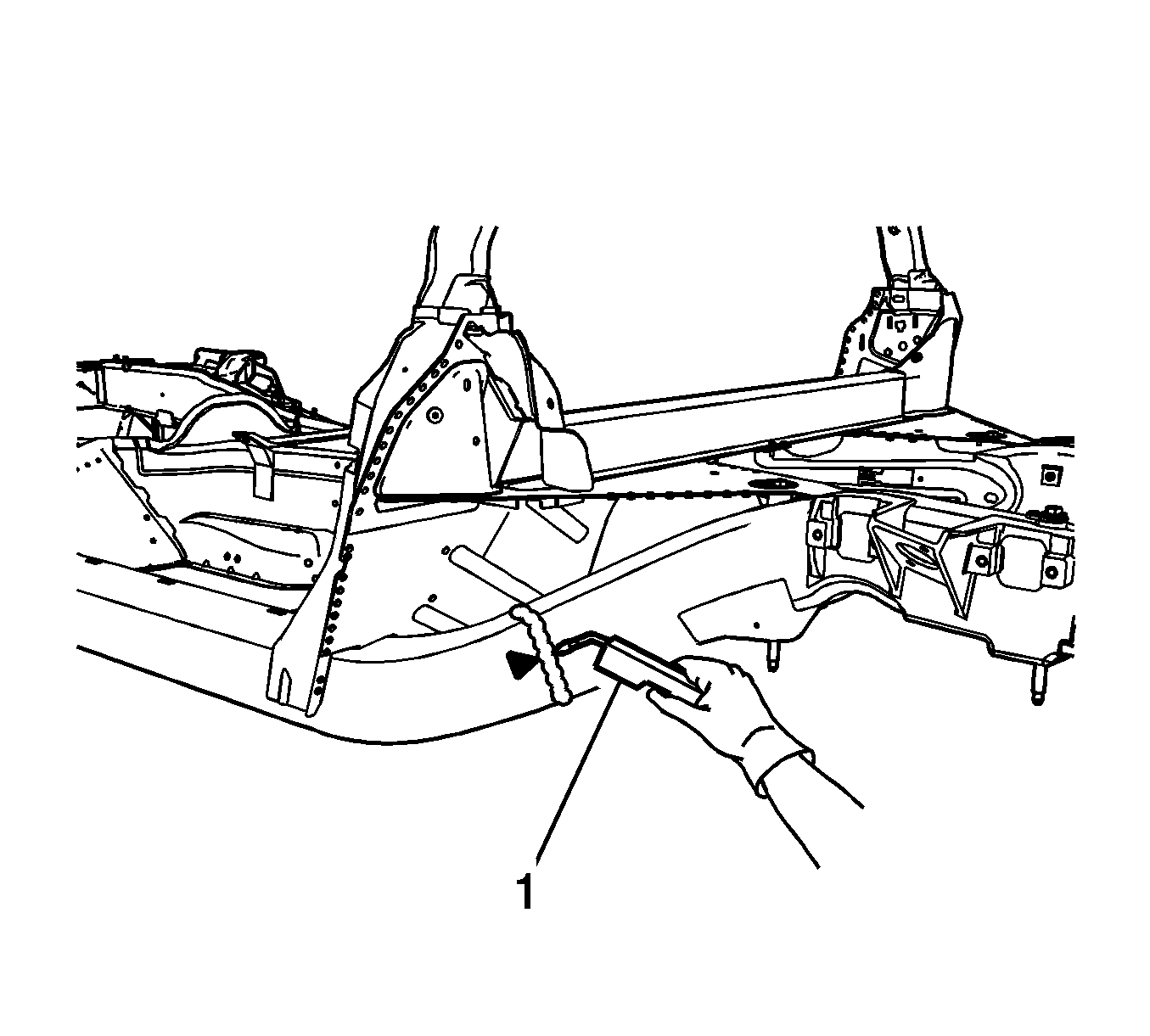
Note: Recommend two weld passes (root and cap).
Recommend wire alloy is 5356 and wire size is 0.035. The shielding gas is 100 percent Argon. A two minute cooling down period is recommend for every 2 minutes or 100 mm (4 in) of welding.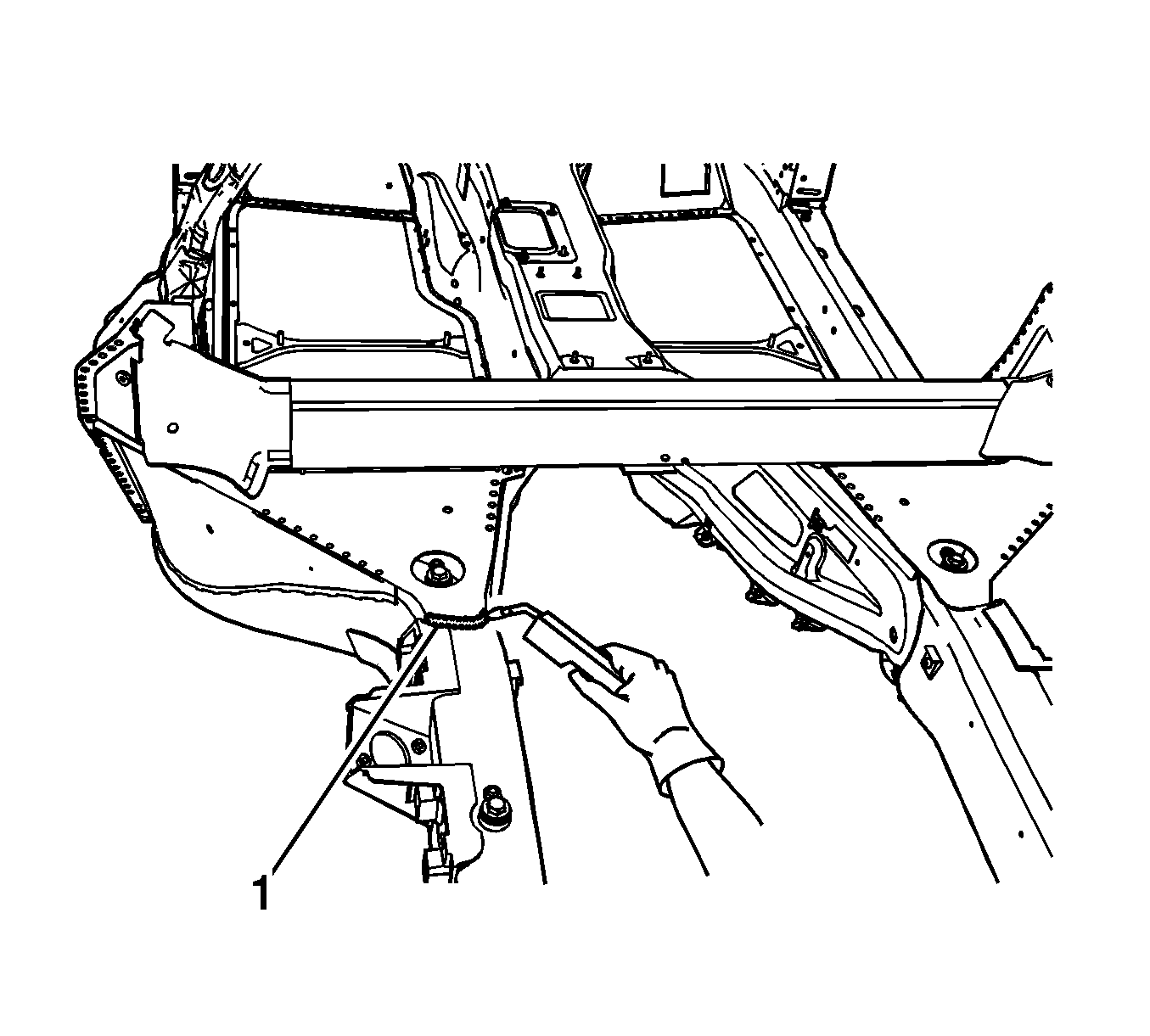
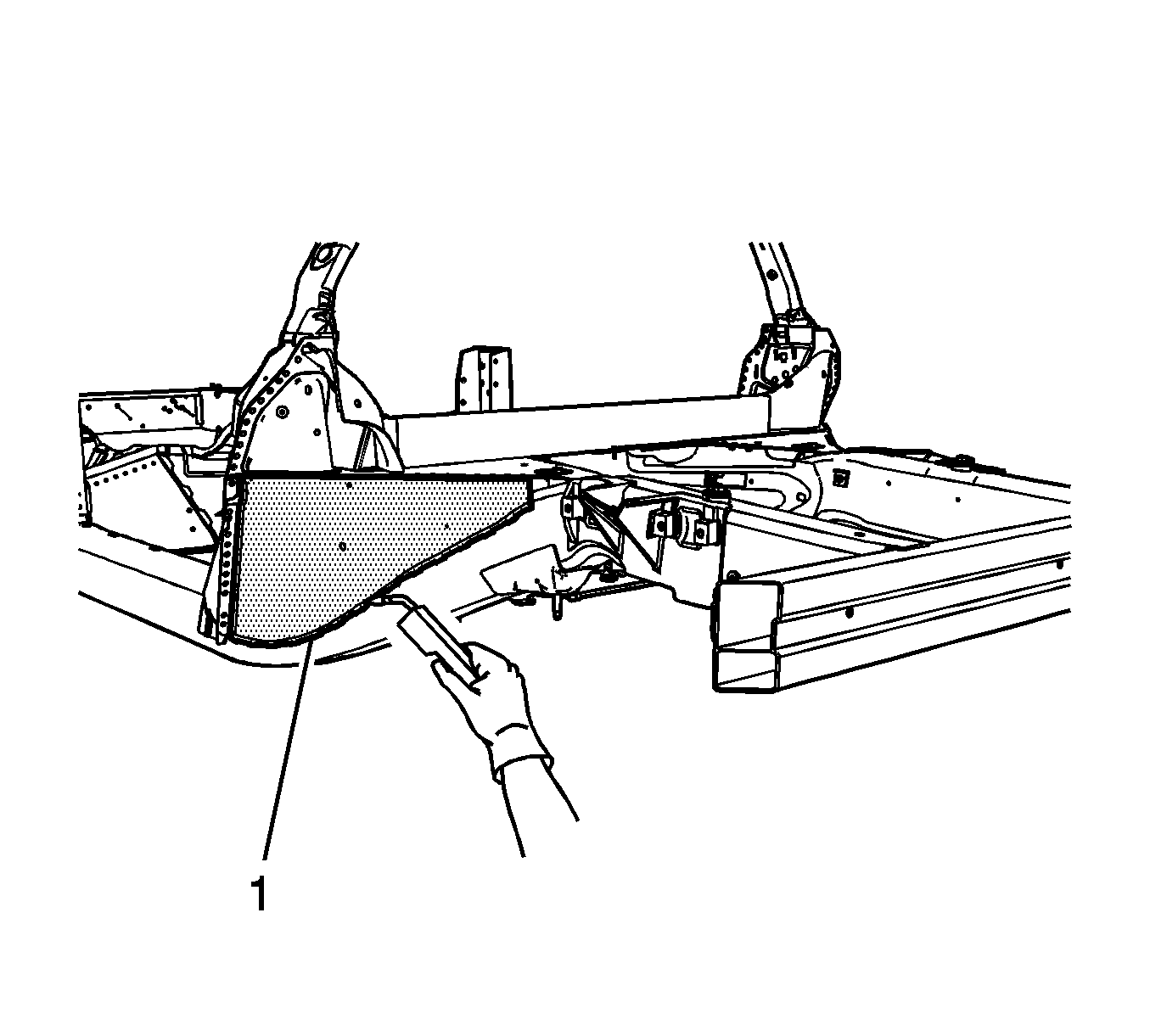
Note: A two minute cooling down period is recommend for every 2 minutes or 100 mm (4 in) of welding.
Note: Replace the SPRs with a structural monobolt rivet GM P/N 19120691.
The structural monobolt rivet requires a special nose tip SPX P/N BO48073.